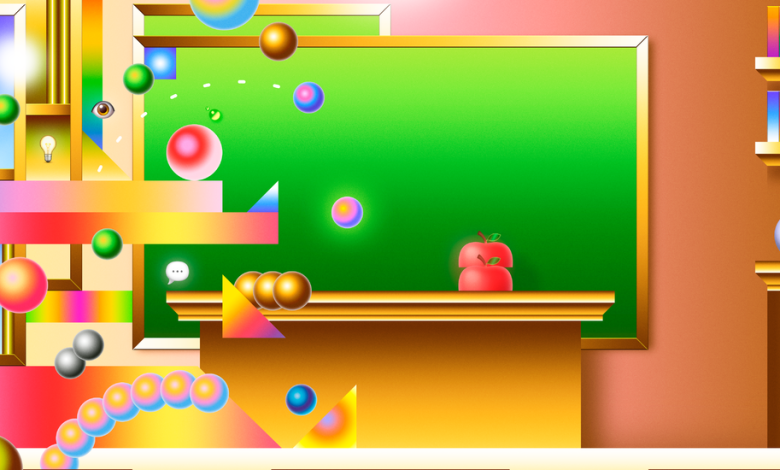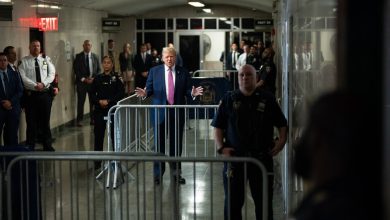How Schools Can Survive (and Maybe Even Thrive) With A.I. This Fall

Last November, when ChatGPT was released, many schools felt like they’d been hit by an asteroid.
In the middle of an academic year, with no warning, teachers were forced to confront the new, alien-seeming technology, which allowed students to write college-level essays, solve challenging problem sets and ace standardized tests.
Some schools responded — unwisely, I argued at the time — by banning ChatGPT and tools like it. But those bans didn’t work, in part because students could simply use the tools on their phones and home computers. And as the year went on, many of the schools that restricted the use of generative A.I. — as the category that includes ChatGPT, Bing, Bard and other tools is called — quietly rolled back their bans.
Ahead of this school year, I talked with numerous K-12 teachers, school administrators and university faculty members about their thoughts on A.I. now. There is a lot of confusion and panic, but also a fair bit of curiosity and excitement. Mainly, educators want to know: How do we actually use this stuff to help students learn, rather than just try to catch them cheating?
I’m a tech columnist, not a teacher, and I don’t have all the answers, especially when it comes to the long-term effects of A.I. on education. But I can offer some basic, short-term advice for schools trying to figure out how to handle generative A.I. this fall.
First, I encourage educators — especially those who teach in high schools and colleges — to assume that 100 percent of their students are using ChatGPT and other generative A.I. tools on every assignment, in every subject, unless they’re being physically supervised inside a school building.
At most schools, this won’t be completely true. Some students won’t use A.I. because they have moral qualms about it, because it’s not helpful for their specific assignments, because they lack access to the tools, or because they’re afraid of getting caught.
But the assumption that everyone is using A.I. outside of class may be closer to the truth than many educators realize. (“You have no idea how much we’re using ChatGPT,” read the title of a recent essay written by a Columbia undergraduate in the Chronicle of Higher Education.) And it’s a helpful shortcut for teachers trying to figure out how to adapt their teaching methods. Why would you assign a take-home exam, or an essay on “Jane Eyre,” if everyone in class — except, perhaps, the most strait-laced rule-followers — will use A.I. to finish it? Why wouldn’t you switch to proctored exams, blue-book essays and in-class group work, if you knew that ChatGPT was as ubiquitous as Instagram and Snapchat among your students?
Second, schools should stop relying on A.I. detector programs to catch students cheating. There are dozens of these tools on the market now, all claiming to spot writing that was generated with A.I., and none of them work reliably well. They generate lots of false positives, and can be easily fooled by techniques like paraphrasing. Don’t believe me? Ask OpenAI, the maker of ChatGPT, which discontinued its A.I. writing detector this year because of a “low rate of accuracy.”
It’s possible that in the future, A.I. companies may be able to label their models’ outputs to make them easier to spot — a practice known as “watermarking” — or that better A.I. detection tools may emerge. But for now, most A.I. text should be considered undetectable, and schools should spend their time (and technology budgets) elsewhere.
My third piece of advice — and the one that may get me the most angry emails from teachers — is that teachers should focus less on warning students about the shortcomings of generative A.I. than figuring out what the technology does well.
Last year, many schools tried to scare students away from using A.I. by telling them that tools like ChatGPT are unreliable, prone to spitting out nonsensical answers and generic-sounding prose. These criticisms, while true of early A.I. chatbots, are less true of today’s upgraded models, and clever students are figuring out how to get better results by giving the models more sophisticated prompts.
As a result, students at many schools are racing ahead of their instructors when it comes to understanding what generative A.I. can do, if used correctly. And the warnings about flawed A.I. systems issued last year may ring hollow this year, now that GPT-4 is capable of getting passing grades at Harvard.
Alex Kotran, the chief executive of the AI Education Project, a nonprofit that helps schools adopt A.I., told me that teachers need to spend time using generative A.I. themselves to appreciate how useful it can be — and how quickly it’s improving.
“For most people, ChatGPT is still a party trick,” he said. “If you don’t really appreciate how profound of a tool this is, you’re not going to take all the other steps that are going to be required.”
There are resources for educators who want to bone up on A.I. in a hurry. Mr. Kotran’s organization has a number of A.I.-focused lesson plans available for teachers, as does the International Society for Technology in Education. Some teachers have also begun assembling recommendations for their peers, such as a website made by faculty at Gettysburg College that provides practical advice on generative A.I. for professors.
In my experience, though, there is no substitute for hands-on experience. So I’d advise teachers to start experimenting with ChatGPT and other generative A.I. tools themselves, with the goal of getting as fluent in the technology as many of their students already are.
My last piece of advice for schools that are flummoxed by generative A.I. is this: Treat this year — the first full academic year of the post-ChatGPT era — as a learning experience, and don’t expect to get everything right.
There are many ways A.I. could reshape the classroom. Ethan Mollick, a professor at the University of Pennsylvania’s Wharton School, thinks the technology will lead to more teachers adopting a “flipped classroom” — having students learn material outside of class, and practice it in class — which has the advantage of being more resistant to A.I. cheating. Other educators I spoke with said they were experimenting with turning generative A.I. into a classroom collaborator, or a way for students to practice their skills at home with the help of a personalized A.I. tutor.
Some of these experiments won’t work. Some will. That’s OK. We’re all still adjusting to this strange new technology in our midst, and the occasional stumble is to be expected.
But students need guidance when it comes to generative A.I., and schools that treat it as a passing fad — or an enemy to be vanquished — will miss an opportunity to help them.
“A lot of stuff’s going to break,” Mr. Mollick said. “And so we have to decide what we’re doing, rather than fighting a retreat against the A.I.”




